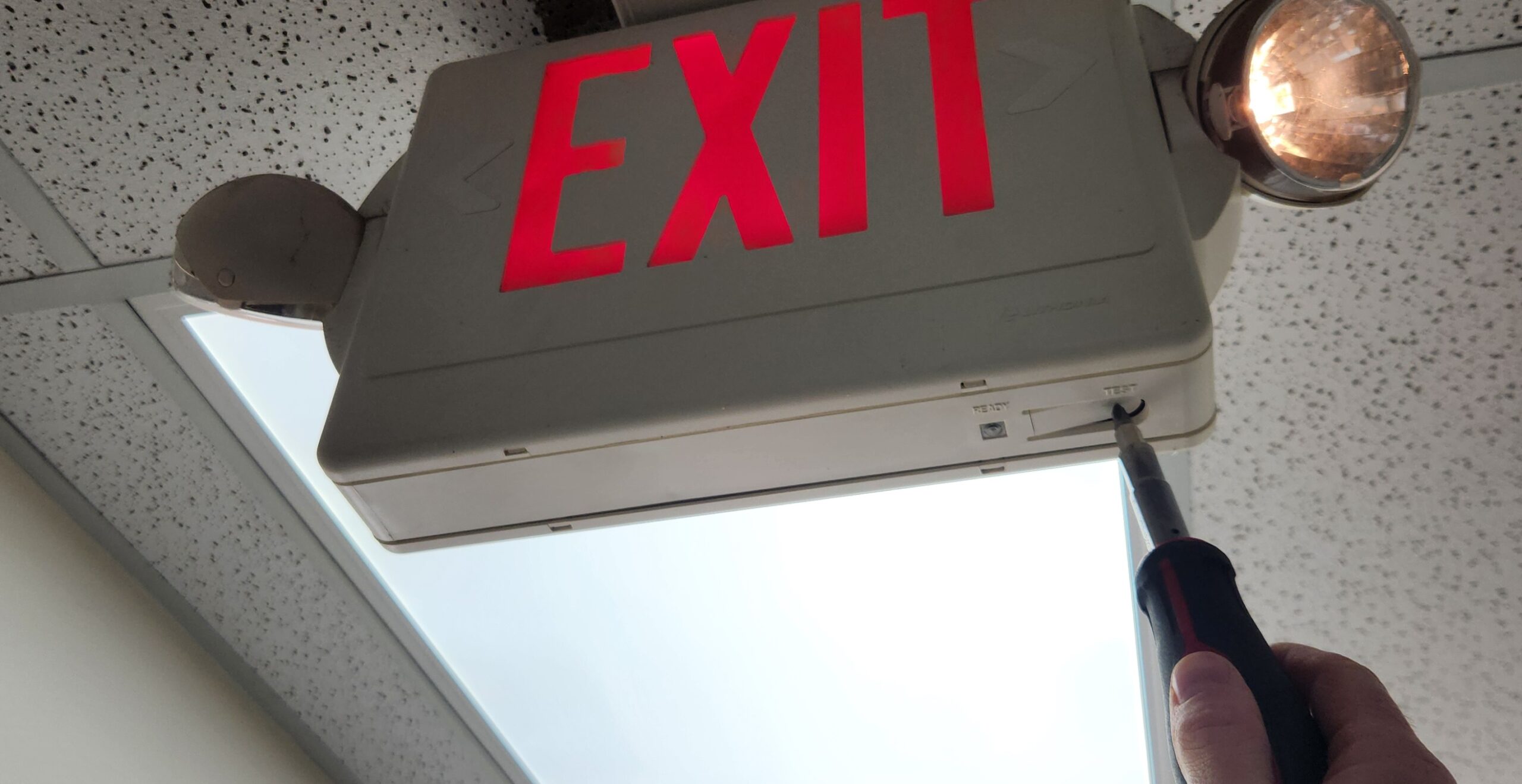When Are Exit Signs Required in Buildings?

Properly placed and visible exit signs are a key part of fire safety in commercial buildings. These signs guide occupants to the nearest exits during an emergency, reducing confusion and improving evacuation times. Federal and local building codes establish strict requirements for exit signs, including when and where they must be installed.
Exit Sign Requirements for Commercial Buildings
Common scenarios where exit signs are required include:
- Buildings with multiple exits: All exits must be clearly marked to indicate the way out.
- Hallways with directional changes: Illuminated signs must direct occupants if an exit is not visible from a hallway.
- Large rooms or warehouses: Areas with complex layouts require signs to prevent confusion.
- Theaters, auditoriums, and assembly spaces: High-occupancy venues must have clear exit signage.
- Any building with emergency lighting: Exit signs must remain visible even when power is lost, using battery backup or photoluminescent materials.
Regulatory Requirements for Exit Signs
Several agencies regulate exit sign requirements, including the Occupational Safety and Health Administration (OSHA) and the National Fire Protection Association (NFPA). Compliance with these regulations is necessary to maintain safe evacuation routes and meet legal obligations.
Key requirements include:
- OSHA 29 CFR 1910.37: This code mandates that exit signs be visible and legible, even in power outages. Signs must have a minimum of six-inch high lettering with a three-fourths-inch stroke width.
- NFPA 101 (Life Safety Code): The NFPA requires exit signs in all commercial buildings, with illumination from an external light source or self-luminous materials.
- International Building Code (IBC) 1003.2.10: This code specifies that exit signs must be placed at every required exit and along the path to an exit when the direction is not obvious.
- Local building codes: Each state or municipality may have additional regulations, which must be followed alongside national standards.
Exit Sign Placement & Visibility Requirements
Exit sign placement is just as important as installation. Improperly placed signs can lead to delays during an emergency, increasing risks for building occupants.
Key placement requirements include:
- Above exit doors: Signs must be installed above each exit at a height that ensures visibility.
- At decision points: Directional exit signs must guide occupants in corridors with multiple pathways.
- At least 6 feet above the floor: To keep signs visible, they must be mounted at a height where they will not be blocked by furniture or equipment.
- Consistent illumination: Signs must be lit at all times, with a reliable backup power source in case of an outage.
- Photoluminescent or externally illuminated options: Self-luminous signs must meet brightness and longevity requirements, while externally illuminated signs must have a continuous power supply.
Request a Quote Today
For over 40 years, Confires has provided fire and life safety solutions to businesses across New Jersey, Delaware, and Eastern Pennsylvania. With 24/7 emergency service, extensive industry experience, and a commitment to customer satisfaction, Confires is the trusted choice for fire safety compliance.
Contact Confires today to learn more or request a quote.
Category: Exit & Emergency Lighting